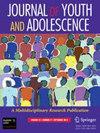Longitudinal Linkages between Parental Overprotection and Children's Anxiety: Disentangling the Between-Family and Within-Family Effects.
IF 3.6
1区 心理学
Q1 PSYCHOLOGY, DEVELOPMENTAL
引用次数: 0
Abstract
Although reciprocal associations between changes in parental overprotection and children's anxiety are theoretically expected, there is a lack of empirical evidence on these linkages that tap into both between-family differences and within-family effects. This longitudinal multi-informant study examined reciprocal associations between parental overprotection and children's anxiety at the between- and within-family level, as well as explored whether these linkages differed by informant, parental role, and children's gender. A total of 471 children (55.2% for boys, Mage at T1 = 9.73, SD = 0.57), their fathers (N = 466, Mage at T1 = 38.92, SD = 4.13), and mothers (N = 469, Mage at T1 = 37.55, SD = 3.85) participated in a three-wave longitudinal study with one-year intervals. Results from random intercept cross-lagged panel modeling (RI-CLPM) indicated that at the between-family level, paternal overprotection, maternal overprotection, and children's anxiety were positively correlated with each other. While at the within-family level, in the parent-reported model, children's anxiety predicted an increase in parental overprotection after one year, with a stronger predictive effect on maternal overprotection than that on paternal overprotection, and in the child-reported model, positively reciprocal predictive effects were found between maternal overprotection and children's anxiety over time, and in the cross-informant-reported models, maternal overprotection reported by children could positively predict the following children's anxiety reported by parents. The above results did not differ between boys and girls. Overall, these findings highlight the importance of disentangling the between-family and within-family effects, and it is crucial to consider the perceptions of both parents and children in longitudinal research concerning the reciprocal associations between parenting behaviors and children's psychosocial development.父母过度保护与儿童焦虑之间的纵向联系:家庭间和家庭内效应的分离。
虽然父母过度保护的变化与儿童焦虑之间的相互关联在理论上是可以预期的,但缺乏关于这些联系的经验证据,这些联系既涉及家庭之间的差异,也涉及家庭内部的影响。这项纵向多信息提供者研究了父母过度保护和儿童焦虑之间在家庭之间和家庭内部水平上的相互关联,并探讨了这些联系是否因信息提供者、父母角色和儿童性别而异。共有471名儿童(55.2%为男孩,Mage at T1 = 9.73, SD = 0.57)、他们的父亲(N = 466, Mage at T1 = 38.92, SD = 4.13)和母亲(N = 469, Mage at T1 = 37.55, SD = 3.85)参与了一项为期一年的三波纵向研究。随机截距交叉滞后面板模型(RI-CLPM)结果显示,在家庭间水平上,父亲过度保护、母亲过度保护与儿童焦虑呈正相关。而在家庭内部层面,在父母报告模型中,儿童焦虑预测父母一年后过度保护的增加,对母亲过度保护的预测作用强于对父亲过度保护的预测作用;在儿童报告模型中,随着时间的推移,母亲过度保护与儿童焦虑之间存在正交互的预测效应;儿童报告的母亲过度保护可以正向预测父母报告的以下儿童焦虑。上述结果在男孩和女孩之间没有差异。总的来说,这些发现强调了拆解家庭之间和家庭内部影响的重要性,在纵向研究中考虑父母和孩子对养育行为和儿童心理社会发展之间相互关系的看法是至关重要的。
本文章由计算机程序翻译,如有差异,请以英文原文为准。
求助全文
约1分钟内获得全文
求助全文
来源期刊

Journal of Youth and Adolescence
PSYCHOLOGY, DEVELOPMENTAL-
CiteScore
8.20
自引率
6.10%
发文量
155
期刊介绍:
Journal of Youth and Adolescence provides a single, high-level medium of communication for psychologists, psychiatrists, biologists, criminologists, educators, and researchers in many other allied disciplines who address the subject of youth and adolescence. The journal publishes quantitative analyses, theoretical papers, and comprehensive review articles. The journal especially welcomes empirically rigorous papers that take policy implications seriously. Research need not have been designed to address policy needs, but manuscripts must address implications for the manner society formally (e.g., through laws, policies or regulations) or informally (e.g., through parents, peers, and social institutions) responds to the period of youth and adolescence.
 求助内容:
求助内容: 应助结果提醒方式:
应助结果提醒方式:


